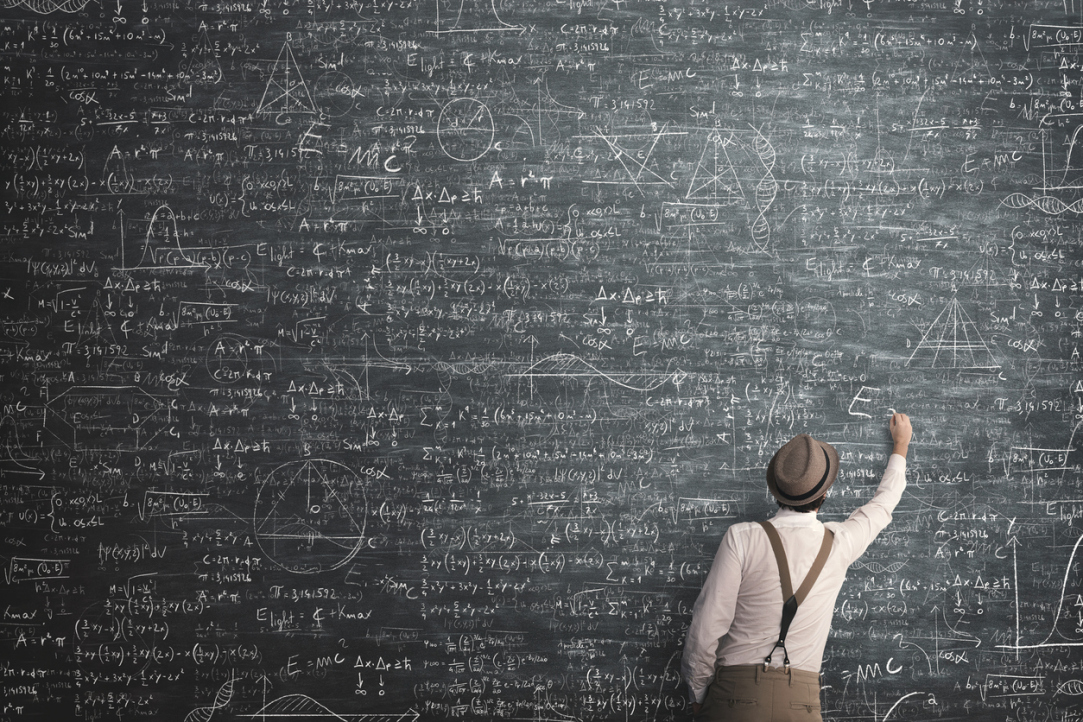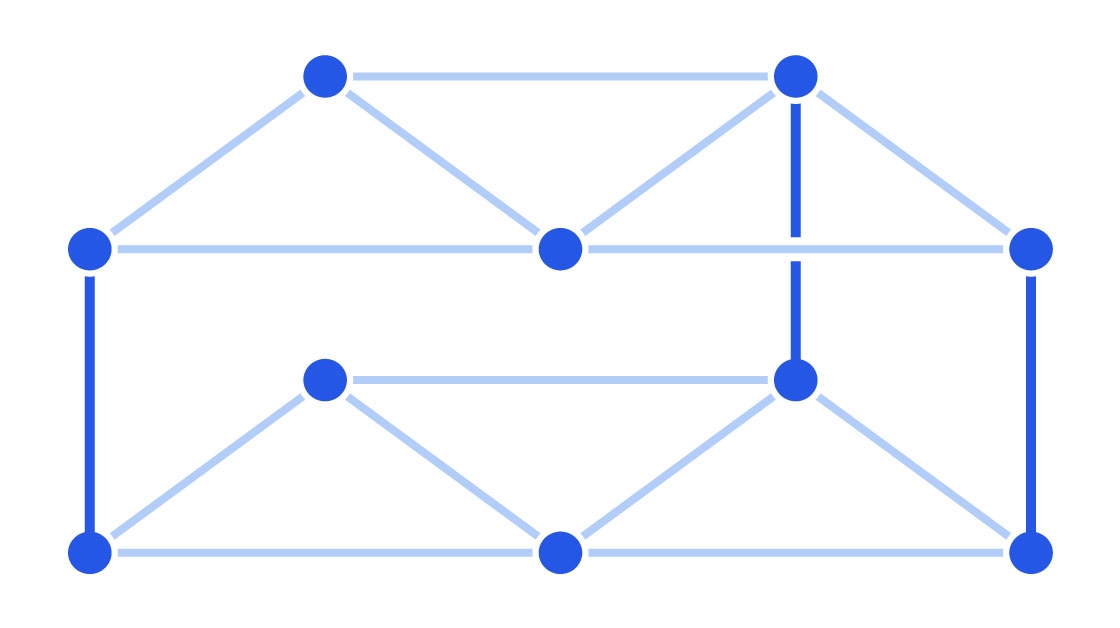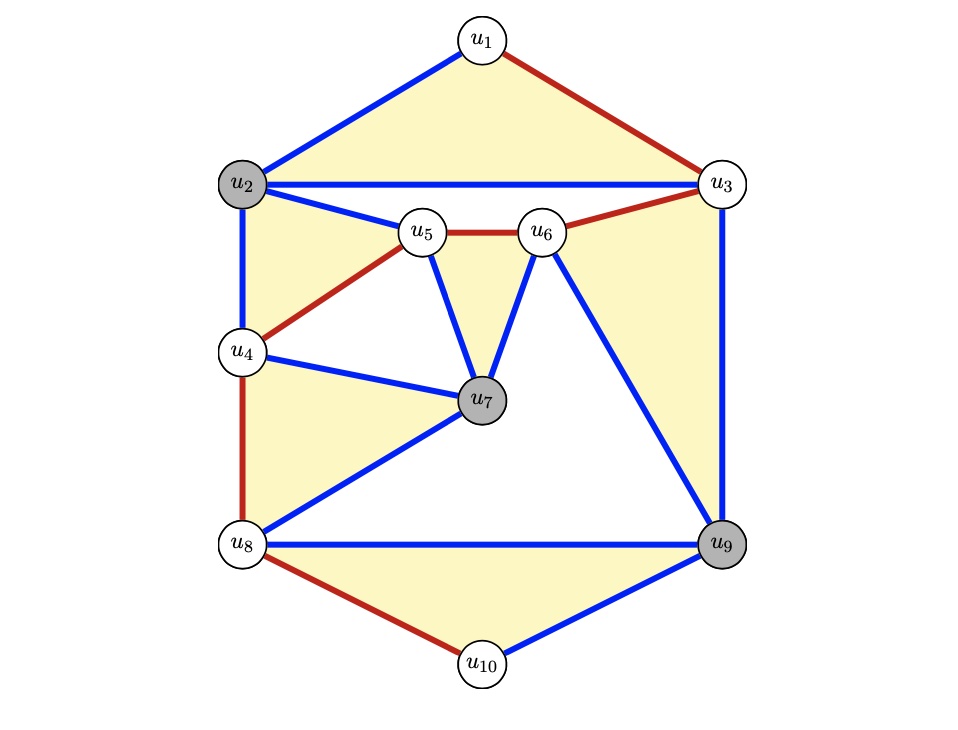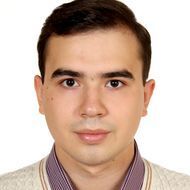Scientists Disprove Bunkbed Conjecture

Mathematicians from Russia, including two HSE graduates, have disproven a well-known mathematical conjecture that, despite lacking solid proof, had been considered valid for 40 years. The ‘Bunkbed Conjecture’ belongs to percolation theory—a branch of mathematics that studies the formation of connected structures in independent environments.
The hypothesis was proposed in the 1980s by Dutch physicist Pieter Kasteleyn, who aimed to mathematically describe how liquids seep through porous surfaces, such as water saturating a sponge.
The conjecture is based on random connections between vertices in an imaginary graph resembling a bunkbed. It posits that the probability of a connection forming between two vertices on the same level is higher than the probability of a connection forming between levels.

While this statement seems intuitively true, no convincing proof had been found to confirm or refute it until recently. Sceptics argued that the claim was too general to hold true in all cases.
Mathematics typically focuses on proving the validity of statements, with disproofs being relatively rare. However, a team of Russian mathematicians—Igor Pak, Nikita Gladkov, and Aleksandr Zimin—managed to find a counterexample that invalidated the conjecture.
‘Actually, my colleague Nikita Gladkov and I first encountered the “bunkbed” concept during our freshman year at HSE. We were dorm roommates, and our room actually had a bunkbed,’ joked Aleksandr Zimin. ‘With this conjecture, we understood that it holds true for most cases. But we were curious—are there rare cases where it fails?’
Initially, the team tried to find a counterexample using machine learning methods. They trained a neural network to identify potential connections in graphs and attempted to explore all possible configurations. However, for graphs with more than nine vertices, the number of possible connections grew exponentially, quickly exceeding computational limits. No proof was found.
The researchers then adapted methods from hypergraph theory, where a disproof of the Bunkbed Conjecture already existed, to classical graphs. They constructed a highly complex structure containing thousands of vertices and edges. In this graph, the probability of a connection forming between the upper and lower levels was slightly higher than the probability of a connection forming on the lower level, thereby disproving the conjecture.

‘My co-authors Igor Pak and Nikita Gladkov—who are currently working at UCLA—and I complemented each other perfectly on this project. I prefer using numerical methods. In my opinion, to truly understand a problem, you need to be able to program it and explain it to a computer. Nikita, on the other hand, takes a different approach and prefers relying on a more abstract, intuitive level,’ says Aleksandr Zimin, one of the authors of the paper and a postgraduate student at the HSE Faculty of Mathematics.

Aleksandr Zimin
‘The conjecture resisted disproof for a long time—or perhaps no one wanted to disprove it because it was beautiful and elegant. However, in my view, disproving it does not destroy its beauty; rather, it proves that the world is far more interesting and complex than we thought,’ Zimin says.
The discovered counterexample raises fundamental questions for science about whether intuition can be relied upon, how critical thinking should be applied in mathematics, and how probabilistic evidence-based proofs should be interpreted.
Alexander Zimin
See also:
Scientists Test Asymmetry Between Matter and Antimatter
An international team, including scientists from HSE University, has collected and analysed data from dozens of experiments on charm mixing—the process in which an unstable charm meson oscillates between its particle and antiparticle states. These oscillations were observed only four times per thousand decays, fully consistent with the predictions of the Standard Model. This indicates that no signs of new physics have yet been detected in these processes, and if unknown particles do exist, they are likely too heavy to be observed with current equipment. The paper has been published in Physical Review D.
HSE Scientists Reveal What Drives Public Trust in Science
Researchers at HSE ISSEK have analysed the level of trust in scientific knowledge in Russian society and the factors shaping attitudes and perceptions. It was found that trust in science depends more on everyday experience, social expectations, and the perceived promises of science than on objective knowledge. The article has been published in Universe of Russia.
Scientists Uncover Why Consumers Are Reluctant to Pay for Sugar-Free Products
Researchers at the HSE Institute for Cognitive Neuroscience have investigated how 'sugar-free' labelling affects consumers’ willingness to pay for such products. It was found that the label has little impact on the products’ appeal due to a trade-off between sweetness and healthiness: on the one hand, the label can deter consumers by implying an inferior taste, while on the other, it signals potential health benefits. The study findings have been published in Frontiers in Nutrition.
HSE Psycholinguists Launch Digital Tool to Spot Dyslexia in Children
Specialists from HSE University's Centre for Language and Brain have introduced LexiMetr, a new digital tool for diagnosing dyslexia in primary school students. This is the first standardised application in Russia that enables fast and reliable assessment of children’s reading skills to identify dyslexia or the risk of developing it. The application is available on the RuStore platform and runs on Android tablets.
Physicists Propose New Mechanism to Enhance Superconductivity with 'Quantum Glue'
A team of researchers, including scientists from HSE MIEM, has demonstrated that defects in a material can enhance, rather than hinder, superconductivity. This occurs through interaction between defective and cleaner regions, which creates a 'quantum glue'—a uniform component that binds distinct superconducting regions into a single network. Calculations confirm that this mechanism could aid in developing superconductors that operate at higher temperatures. The study has been published in Communications Physics.
Neural Network Trained to Predict Crises in Russian Stock Market
Economists from HSE University have developed a neural network model that can predict the onset of a short-term stock market crisis with over 83% accuracy, one day in advance. The model performs well even on complex, imbalanced data and incorporates not only economic indicators but also investor sentiment. The paper by Tamara Teplova, Maksim Fayzulin, and Aleksei Kurkin from the Centre for Financial Research and Data Analytics at the HSE Faculty of Economic Sciences has been published in Socio-Economic Planning Sciences.
Larger Groups of Students Use AI More Effectively in Learning
Researchers at the Institute of Education and the Faculty of Economic Sciences at HSE University have studied what factors determine the success of student group projects when they are completed with the help of artificial intelligence (AI). Their findings suggest that, in addition to the knowledge level of the team members, the size of the group also plays a significant role—the larger it is, the more efficient the process becomes. The study was published in Innovations in Education and Teaching International.
New Models for Studying Diseases: From Petri Dishes to Organs-on-a-Chip
Biologists from HSE University, in collaboration with researchers from the Kulakov National Medical Research Centre for Obstetrics, Gynecology, and Perinatology, have used advanced microfluidic technologies to study preeclampsia—one of the most dangerous pregnancy complications, posing serious risks to the life and health of both mother and child. In a paper published in BioChip Journal, the researchers review modern cellular models—including advanced placenta-on-a-chip technologies—that offer deeper insights into the mechanisms of the disorder and support the development of effective treatments.
Using Two Cryptocurrencies Enhances Volatility Forecasting
Researchers from the HSE Faculty of Economic Sciences have found that Bitcoin price volatility can be effectively predicted using Ethereum, the second-most popular cryptocurrency. Incorporating Ethereum into a predictive model reduces the forecast error to 23%, outperforming neural networks and other complex algorithms. The article has been published in Applied Econometrics.
Administrative Staff Are Crucial to University Efficiency—But Only in Teaching-Oriented Institutions
An international team of researchers, including scholars from HSE University, has analysed how the number of non-academic staff affects a university’s performance. The study found that the outcome depends on the institution’s profile: in research universities, the share of administrative and support staff has no effect on efficiency, whereas in teaching-oriented universities, there is a positive correlation. The findings have been published in Applied Economics.


